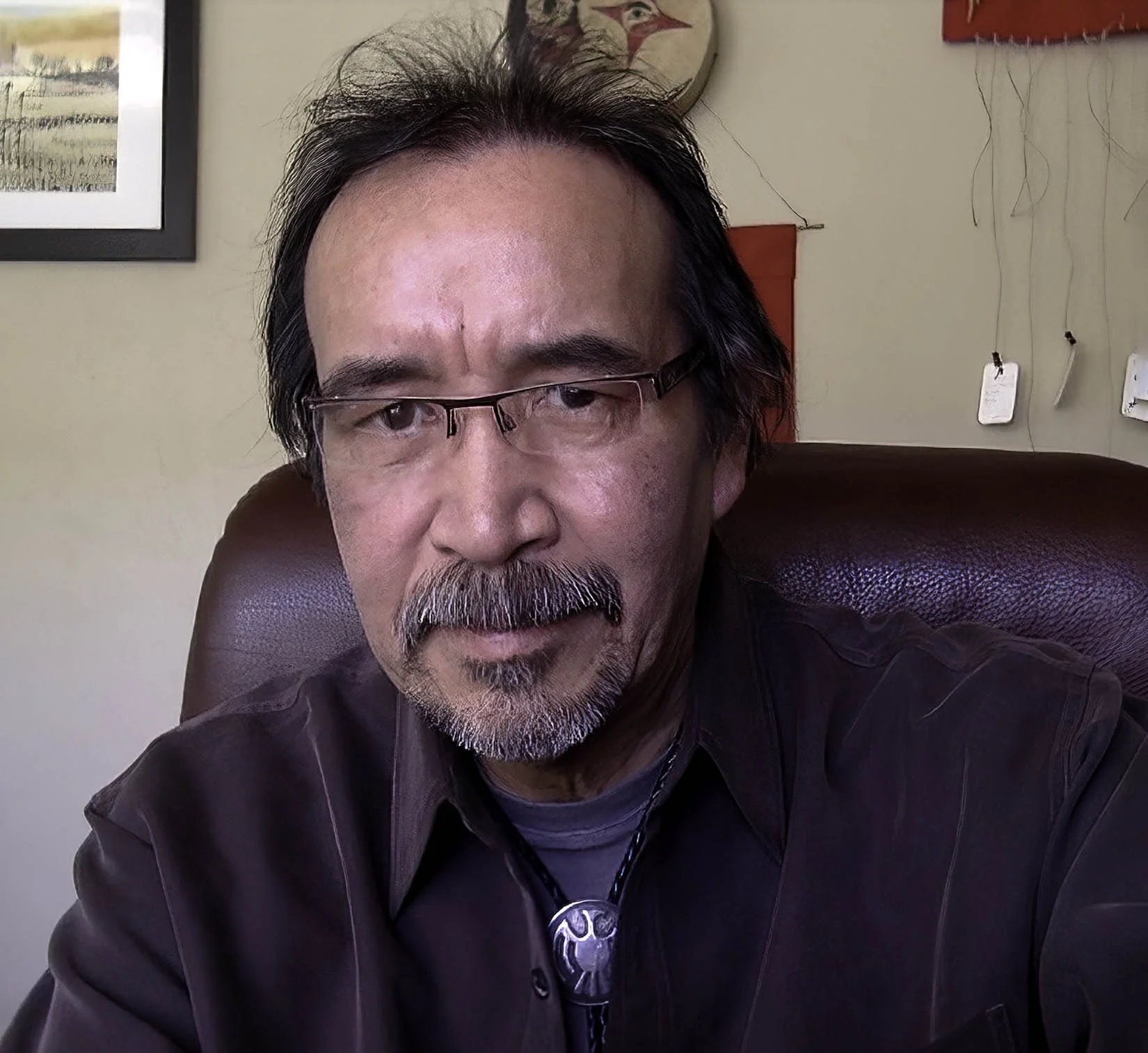Interview with Larry McNeil
by Wayne Martin Belger
Larry McNeil will speak Saturday, May 7 at 1:30 pm PST
In-person festival registration is available at the door
Wayne Martin Belger: What was your first spark as far as choosing photography over other mediums and what was your path into fine art?
Larry McNeil: We had a really great high school photography program. I did really well with it and found that I could express myself with photography nearly as well as writing. Writing was actually my first passion. That came long before photography did. I find that I can express myself in a different way using the medium of photography, but I find that I'm doing a lot of the same things as I did with writing. You know, telling stories and offering these visual narratives. It wasn't really much of a leap to make the lateral shift from writing into photography.
My path into fine art was a photograph titled Real Indians. I think a lot of artists have a breakthrough piece like that where you can actually look back and go, "Oh, yeah. That's when I first made my really great print." For me, that's it. I know exactly when it happened, December of 1977. I was 22 years old and knew I could have a future as an artist.
WMB: Do you feel that your work comes more from a personal family and tribal history compared to general American cultural mythology?
LM: The work we make has to do with our life experiences. For me, it has to do with being an Indigenous person. Of course, I'm going to make photography about what I know. Of course, it broadens out in scope to include my own tribe or tribes. Then I got my formal education at Brooks Institute in California and at the University of New Mexico. Being exposed to such a broad spectrum of other artists has influenced my work, too. It comes from a lot of different places. Of course, it always goes back to my own personal experiences as who I am, what I look like, and all that.
WMB: At one point, you worked with Patrick Nagatani. How did that come about?
LM: I got a job teaching at the Institute of American Indian Arts in Santa Fe. Patrick was a visiting artist at our school and that's when I met him. That had to be 1993 or so. It was a natural match, almost like we knew each other for years. We could talk about photography, talk about the creative process, and so forth. It was an instant kinship from the moment we first met.
One of the reasons why I opted to apply to the University of New Mexico was mostly because of Nagatani. I like the way he thinks. I like how he really pushes photography as an art form and nurtures other people to do the same. He truly had the gift for teaching. He was so good at nurturing young photographers. I really admired that.
WMB: Can you tell us a bit about your process?
LM: It starts out with a journal for me. I come up with ideas by writing a paragraph or even a few sentences and then start building the image from that. For example, I have a collage piece called In The True Spirit of White Men that came directly from a journal entry, verbatim. The challenge therein was how to make a visual manifestation of that entry. I wanted an abstract background and because I was working with platinum and palladium, I use butcher paper on the counters of my dark room so it wouldn't stain them. After a year the butcher paper is just covered with splatters, so I replace them on a regular basis.
Anyway, I was tearing one of them off one day and I was looking at this spatter, and I thought, "Wow. That's a really cool abstraction. I'm going to use that for the new print." That butcher paper that was just meant to protect the counter became the background for that print.
WMB: For a lot of your collages, where do you source a lot of the imagery? Is it images you shoot or is it things you download or get from other places?
LM: It's a combination of everything. Including things like lithography and the digital prints that have to do with whatever idea I'm working with, I like to have my own source material for the majority of it. Sometimes I'll find other sources too. For example, when I was working on the Tonto series about stereotypes some of the photographs were from the public domain, ones that are no longer copyrighted.
WMB: You have a piece called Res Net 30/76-2. The title refers to a negative that you got from the Library of Congress, right?
LM: Yeah. About 15 years ago the Library of Congress had content online that you could just download. I spent weeks on their website and I did a lot of searches, including ones for Native American women, late 1800s, and Native children too because the piece I wanted to make had to do with Native boarding schools. Whenever I do that, I like to include the Library of Congress information so that the viewer can see that that is an actual part of history and can find the source.
WMB: What drew you to platinum print making?
LM: When I was teaching in Santa Fe, I'd walk around, I'd go look at the galleries, and I'd meet the gallery people downtown. For a photographer to be going around museums and galleries and seeing the actual work as opposed to seeing it in a book, when you see a platinum art photograph, it stops you in your tracks. One of the people that I met early on was David Michael Kennedy. He had regular exhibitions at the Andrew Smith Gallery and he was doing workshops on platinum print making. It was a deep immersive experience. We'd get up at seven and we'd have our coffee and breakfast right there at his place. We'd be in the darkroom by 7:30 or 8 at the latest and essentially work all day. We'd finish around six or seven at night. We'd look at what we did that day and if we're on a good track, we'd go right back into the darkroom and work until midnight. These are long days and long nights, but in my opinion that's the best way of learning something as sophisticated as platinum printing.
WMB: When you show your work, what do you hope viewers will take from an exhibit?
LM: Boy, that's a good question. I'll preface that by saying I wish I could walk around the gallery anonymously with my antennas up, just listening what other people are saying about seeing the show. I do have stories and messages with each one of my photographs or series of photographs that I make and my deep wish is that people are able to appreciate it and understand it, what it's about, regardless of their cultural background. A lot of people say, "Larry, you're a Native artist. You make some really great art for Native people" and I thank them for that and I say, "Yes. That's absolutely true but I also like to make work for humanity, not just one specific group."

